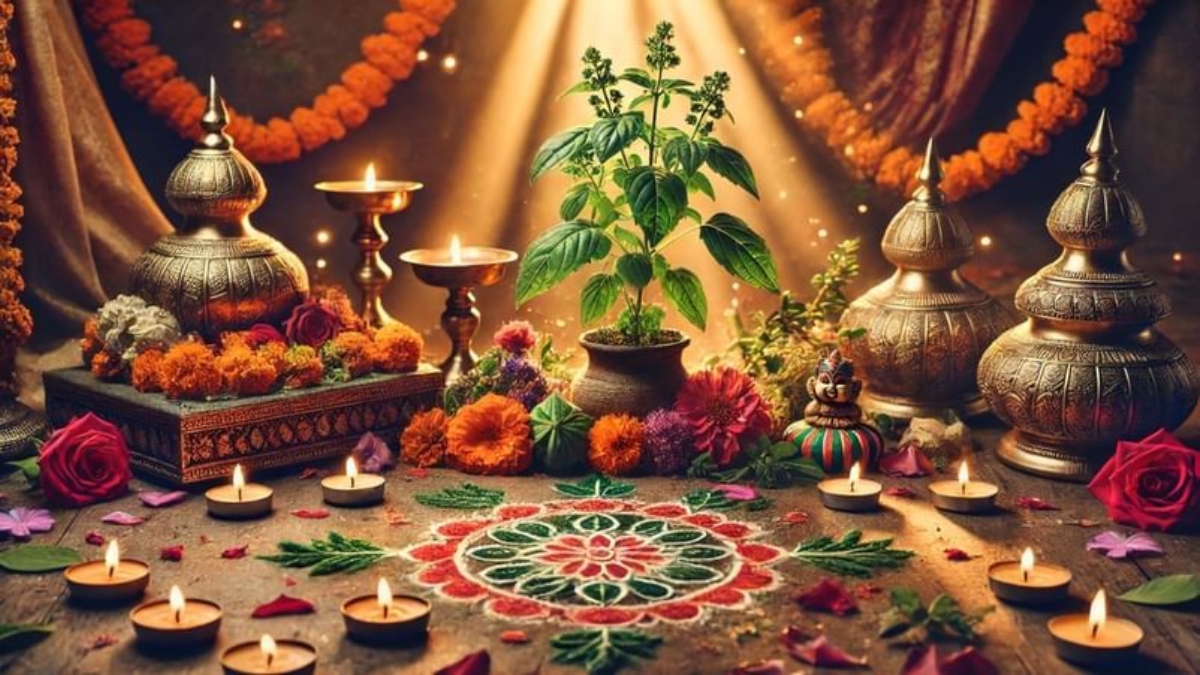Tulsi Vivah 2025: Dates, Rituals, and Spiritual Significance of the Sacred Marriage
Tulsi Vivah celebrates the sacred union of nature and divinity, marking an auspicious period for spiritual observances and community blessings.
Want daily inspiration like this? Subscribe to our newsletter!
Article Summary
Tulsi Vivah in 2025 will primarily be observed on November 2nd, coinciding with Kartik Shukla Dwadashi, though ceremonies can be performed between Devuthani Ekadashi and Kartik Purnima. This ritual involves symbolically marrying the sacred Tulsi plant to Shaligram, a manifestation of Lord Vishnu. The tradition is believed to bestow the merit of Kanyadaan and bring happiness and prosperity to participants.
Original Article: indiatvnews.com
[ Sentiment: positive | Tone: factual ]
This summary and analysis were generated by TheNewsPublisher's editorial AI. This content is for informational purposes only; it does not constitute spiritual or religious advice.
[ Sentiment: positive | Tone: factual ]
This summary and analysis were generated by TheNewsPublisher's editorial AI. This content is for informational purposes only; it does not constitute spiritual or religious advice.
TNP AI: Key Insights
The symbolic marriage of the Tulsi plant to Shaligram represents the profound Vedantic concept of Prakriti (nature) uniting with Purusha (the divine consciousness), emphasizing the sacredness inherent in all creation and promoting ecological reverence within Sanatana Dharma.
Tulsi Vivah holds significant calendrical importance as it marks the ceremonial conclusion of Chaturmas, the four-month period when Lord Vishnu is believed to rest. Its observance immediately after Devuthani Ekadashi signals the awakening of the deities and ushers in an auspicious season for auspicious events, including weddings, symbolizing renewal and divine blessings.
Beyond this specific ritual, the Tulsi plant (Holy Basil) is deeply revered in Hindu households as a manifestation of Goddess Lakshmi and a symbol of purity. Its presence is vital in daily worship, and it is cherished for its medicinal properties and its role in purifying the environment, embodying devotion and well-being for the entire Hindu community.



